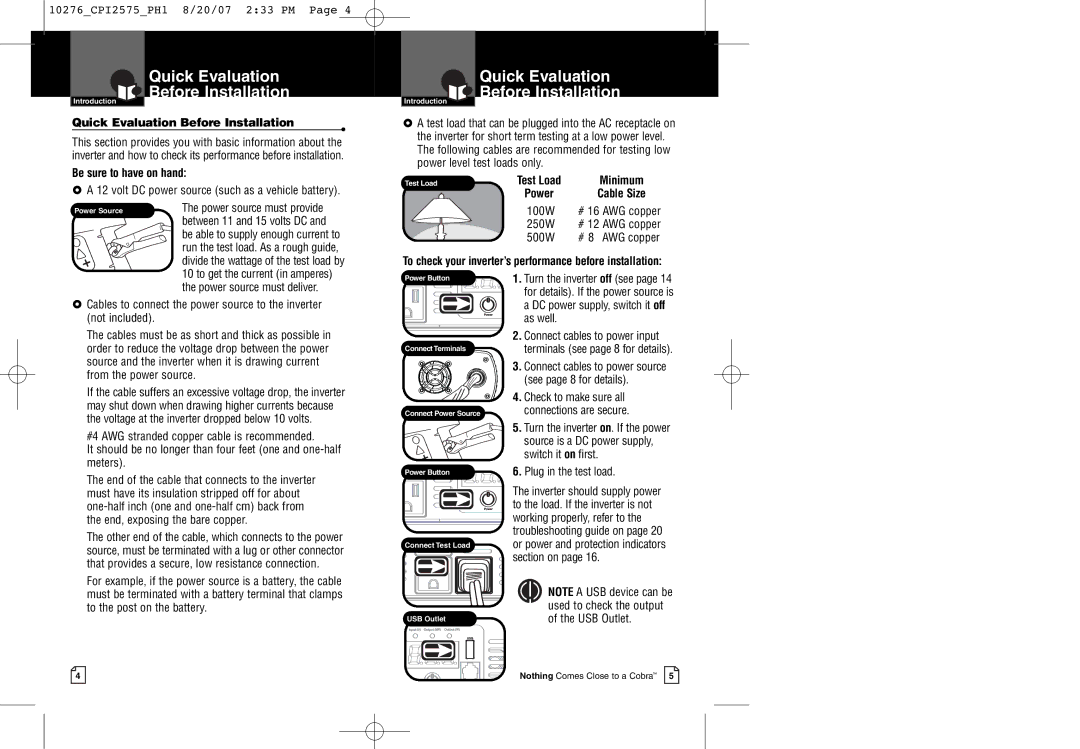
![]() 10276_CPI2575_PH1 8/20/07 2:33 PM Page 4
10276_CPI2575_PH1 8/20/07 2:33 PM Page 4
Be sure to have on hand:
≤A 12 volt DC power source (such as a vehicle battery).
Power Source | The power source must provide |
| between 11 and 15 volts DC and |
| be able to supply enough current to |
| run the test load. As a rough guide, |
| divide the wattage of the test load by |
| 10 to get the current (in amperes) |
the power source must deliver.
≤ Cables to connect the power source to the inverter (not included).
The cables must be as short and thick as possible in order to reduce the voltage drop between the power source and the inverter when it is drawing current from the power source.
If the cable suffers an excessive voltage drop, the inverter may shut down when drawing higher currents because the voltage at the inverter dropped below 10 volts.
#4 AWG stranded copper cable is recommended.
It should be no longer than four feet (one and
Quick Evaluation

 Before Installation
Before Installation
Introduction
≤A test load that can be plugged into the AC receptacle on the inverter for short term testing at a low power level. The following cables are recommended for testing low power level test loads only.
Test Load | Test Load | Minimum |
| Power | Cable Size |
| 100W | # 16 AWG copper |
| 250W | # 12 AWG copper |
| 500W | # 8 AWG copper |
To check your inverter’s performance before installation:
1. Turn the inverter off (see page 14 for details). If the power source is a DC power supply, switch it off as well.
2.Connect cables to power input
terminals (see page 8 for details).
3. Connect cables to power source (see page 8 for details).
4. Check to make sure all connections are secure.
5. Turn the inverter on. If the power source is a DC power supply, switch it on first.
The end of the cable that connects to the inverter must have its insulation stripped off for about
The other end of the cable, which connects to the power source, must be terminated with a lug or other connector that provides a secure, low resistance connection.
For example, if the power source is a battery, the cable must be terminated with a battery terminal that clamps to the post on the battery.
Connect Test Load |
USB Outlet
6.Plug in the test load.
The inverter should supply power to the load. If the inverter is not working properly, refer to the troubleshooting guide on page 20 or power and protection indicators section on page 16.
NOTE A USB device can be used to check the output of the USB Outlet.
4
Nothing Comes Close to a Cobra™ 5
